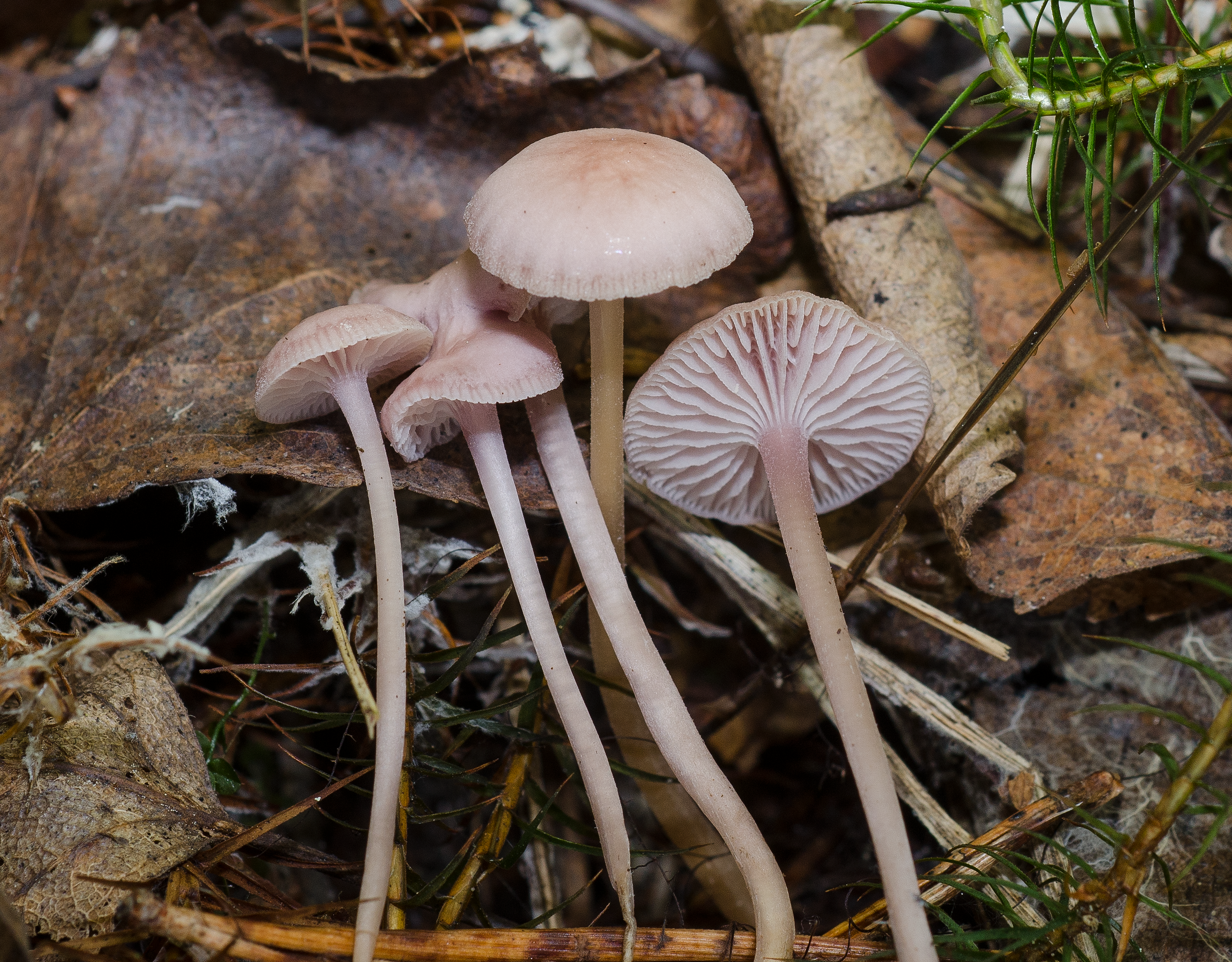Mycena pearsoniana
Mycena pearsoniana
Description
Hyphae of the pileipellis, cheilocystidia, basidium, spores, hyphae of the cortical layer of the stem, and caulocystidia.
Cap 5-20 mm across, hemispherical to campanulate or parabolical, flattening with age, becoming plano-convex, ±umbonate or somewhat depressed, more or less sulcate, translucent-striate, hygrophanous, glabrous, slightly glutinous when wet, variably coloured, very dark dingy purplish brown to pinkish when young, then becoming pale date brown or yellowish brown with a lilaceous or pinkish tint or entirely pinkish, with concolorous or paler margin. Gills 18-31 reaching the stem, broadly adnate to somewhat decurrent, smooth to ribbed, dorsally intervenose with age, at first greyish violet, gradually turning more brownish with some lilaceous tint, the edge more or less concolorous. Stem 25-65(-90) x 1-2.5 mm, fragile to firm, cylindrical, equal or somewhat broadened below, smooth, pruinose to floccose-puberulous above, glabrous farther down, at first fairly dark violet with a slight brownish shade, becoming rather pale lilaceous brown to pale dingy flesh-coloured, the base sparsely covered with long, coarse, whitish fibrils. Odour and taste raphanoid. Basidia 22-27 x 6.5-7 µm, clavate, 4-spored. Spores 6-9 x 3.5-4.5 µm, Qav ˜ 1.6, pip-shaped, non-amyloid. Cheilocystidia 30-80 x 6-12.5 µm, forming a sterile band, clavate, subcylindrical to subfusiform, smooth, apically obtuse or (more rarely) mucronate. Pleurocystidia absent. Lamellar trama dextrinoid. Hyphae of the pileipellis 1.5-4.5 µm wide, smooth, lower layers embedded in gelatinous matter. Hyphae of the cortical layer of the stem 2-3.5 µm wide, smooth, terminal cells (caulocystidia) 27-62 x 6-12.5 µm, clavate to fusiform, smooth. Clamps present in all tissues.
Ecology and distribution
Solitary, gregarious to cespitose in leaf humus, among herbs, under shrubs or deciduous trees, less frequently under conifers, often in fairly moist habitats. Not uncommon in alpine Salix shrubs. Summer to autumn. Rather rare in Norway.


